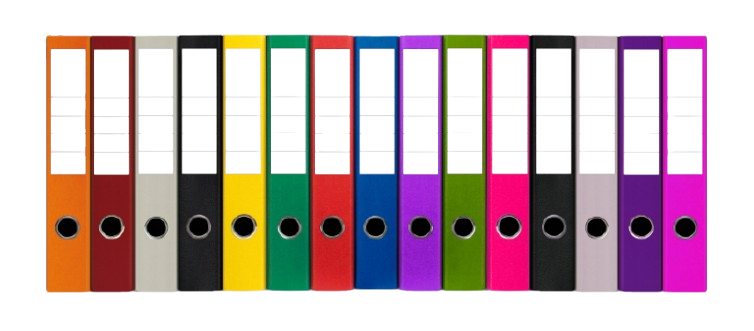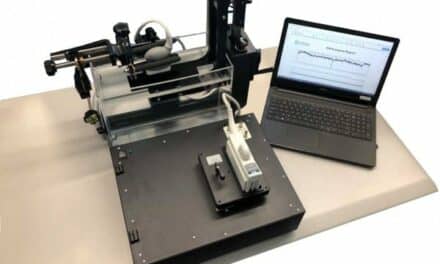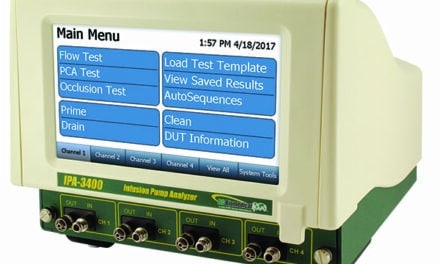As HTM teams take on more data-driven, software-centric work, test equipment is becoming faster, smarter, and more connected.
As medical devices become more connected and software-driven, test equipment is evolving to keep pace. Healthcare technology management (HTM) teams are looking for tools that go beyond basic safety checks; they want equipment that supports automation, simplifies documentation, and integrates smoothly into today’s digital hospital environments.
In this roundtable, 24×7 Magazine speaks with four test equipment leaders—Justin Barbour, director of business development at BC Group; Lewis Lennard, product manager, the Americas, at Rigel Medical; Greg Alkire, vice president of business development at Pronk Technologies; and Jamie Spragis, CBET, technical sales engineer at Fluke Biomedical—about changing customer expectations, the rise of automation, and where diagnostic tools are headed next.
They also weigh in on today’s biggest challenges—from cybersecurity concerns to training gaps—and offer practical advice for HTM teams looking to upgrade their test equipment portfolios in the coming year.
24×7: How are your customers’ expectations of test equipment changing as medical devices become more connected and software-driven?
Barbour: Surprisingly, even though the clinical engineering field is usually slow to change, software-driven tools like automated testing have caught on quickly. Everyone’s chasing greater efficiency, and it’s the software’s job to boost functionality and usability. Today’s customers expect modern test equipment to come with graphical diagrams and help menus that show them exactly how to run the tests. Every CMMS is different, and each customer brings its own security requirements for software installations.
Lennard: As medical devices become more connected and software-driven, our customers increasingly expect test equipment to match that level of sophistication. There’s growing demand for wireless connectivity, app-based devices, and seamless integration with CMMS platforms. We’ve responded with tools that support Bluetooth, CMMS integration, and mobile applications.
Everyone’s chasing greater efficiency, and it’s the software’s job to boost functionality and usability.
– Justin Barbour, BC Group

Alkire: Overall, we are seeing a rapid increase in interest from the HTM community for wireless control and data capture with test instruments, as we have led the way in designing these capabilities that reduce testing time. Biomeds can now bypass the process of writing results down by hand and typing them up later into work orders. They can improve their workflow with a wide array of new digital tools, and we will continue to expand on these. A specific example of customers’ expectations of test equipment changing related to more medical devices being software-driven: The medical device’s operating system may not recover well from a sudden power-off and may not reboot as expected. Consequently, biomeds have to look for test equipment that doesn’t cause an unexpected powering off of the medical device.
Spragis: Customers are prioritizing test equipment that is intuitive and user-friendly. The Fluke ESA710 Electrical Safety Analyzer exemplifies this with its 5” color LCD touchscreen and intuitive user interface, making it easier for users to perform tests efficiently. Workflow automation is also a critical feature that customers are looking for in modern test equipment. The ESA710, integrated with OneQA software, automates testing and documentation processes. This not only saves time but also reduces the likelihood of human error, ensuring more accurate and reliable results. There is a growing demand for test equipment with wireless and Bluetooth capabilities. The ESA710 supports wireless connectivity, enabling seamless data transfer and remote monitoring. This feature is crucial for integrating with other digital health systems and enhancing connectivity.
Additionally, efficiency is a top priority, and test instruments are being designed to be more compact, portable, and faster. The ESA710’s portability and the ability to integrate with barcode scanners help streamline processes by automating data capture and reducing manual entry errors. This integration enhances overall lab efficiency and ensures accurate tracking of samples.
24×7: How has automation changed how HTM teams interact with test equipment—especially when it comes to routine preventative maintenance (PM) or safety checks?
Barbour: Automation has streamlined most processes and, when documented well, enables an experienced technician to achieve the same testing quality as a senior technician. Because most clinical engineering programs lack a structured training regimen for developing technicians, automated testing helps fill that gap.
Lennard: Automation is transforming how HTM teams approach testing. For routine PMs and safety checks, automated test sequences significantly reduce human error and save time. Devices like the Uni-Therm feature guided workflows and on-screen prompts that simplify these tasks, especially valuable in high-volume settings such as hospitals and OEM service teams.
Alkire: Before we developed the Safe-T Sim Safety Analyzer with Bluetooth capabilities that connects to smart devices, most HTM teams were still writing down the tests performed and typing results into work orders later or only capturing pass/fail results. Now, controlling multiple tests in an automated sequence at the press of a single button from an iPad or iPhone, with its time savings, has led a large percentage of HTM teams to abandon their notepads. They can also utilize their smart devices to access step-by-step dynamic procedures with all test results captured. These procedures can be modified easily to create a “library” of procedures that extend from generic device type testing to comprehensive manufacturer-based PMs. The Pronk Mobilize solution offers biomeds a lot of flexibility to address their broad array of responsibilities in a systematic manner while also freeing them from constantly navigating software menus on the test equipment after it has been connected to the medical device.

Now, controlling multiple tests in an automated sequence at the press of a single button from an iPad or iPhone…has led a large percentage of HTM teams to abandon their notepads.
– Greg Alkire, Pronk Technologies
Spragis: Automation helps establish consistent procedures and protocols across the board and enables the systematic capture and storage of test results in a searchable format. The Fluke ESA710 with OneQA software standardizes test processes and documentation, ensuring that all equipment is tested and maintained to the same high standards. It facilitates this by automatically saving and syncing test results, which can then be analyzed to identify trends, predict equipment failures, and optimize maintenance schedules. This standardized approach helps create a clear and consistent record of maintenance activities and provides verifiable evidence that all necessary checks and maintenance were performed according to established protocols, which can be crucial in audits and mitigating the risk of lawsuits.
Automated systems and standardized workflows make it easier and faster to train new biomedical equipment technicians. With the ESA710 and OneQA, new hires can quickly learn and adapt to the required tasks, reducing the time it takes for them to become fully operational.
Automation systems like OneQA can capture and store the valuable, often undocumented knowledge held by experienced technicians. This “tribal knowledge” includes best practices, troubleshooting tips, and historical data that can be invaluable for training new staff and maintaining consistency in operations.
24×7: What types of tasks are now automated that weren’t five years ago?
Barbour: Small chores, like putting a device into service mode, used to chew up time while you hunted for the right codes or button combos. Now those steps take seconds, thanks to photo guides and pop-up tips. Controlling one test device wirelessly has been possible for years, but with improved Bluetooth, you can now send and receive data from multiple devices simultaneously.
Lennard: Tasks that once required manual intervention, such as configuring test parameters and compiling reports, can now be completed automatically. Automatically controlling medical devices and capturing test results with integrated test equipment is a relatively new advancement, offering significant efficiency gains for HTM teams.
Automatically controlling medical devices and capturing test results with integrated test equipment is a relatively new advancement, offering significant efficiency gains for HTM teams.
– Lewis Lennard, Rigel Medical

Alkire: Automation that existed over five years ago was largely inaccessible in terms of cost or required a high learning curve. Pronk has, from its inception, envisioned new approaches to achieve greater efficiency in support of biomeds. So, Pronk introduced Mobilize approximately six years ago which provides biomeds the capabilities to automatically load dynamic procedures onto a smart device, to use the smart device as a secure “remote control” to start autosequences, to capture measured values via Bluetooth during and after testing, and to print out PM stickers wirelessly, among many other automated efficiencies that we developed. The days of having to enter handwritten results into a CMMS system are dwindling as Mobilize’s integrations, for example, allow direct uploads of automated work order results.
Spragis: Previously, entering asset information was a manual and time-consuming process. Now, with the integration of barcode scanners in devices like the Fluke ESA710, asset information can be quickly and accurately captured. This automation reduces human error and speeds up the data entry process. The user interfaces of modern test equipment, such as the ESA710, have become more intuitive and user-friendly. HTM teams can easily navigate, build, and utilize PM procedures that are saved on the device. This automation simplifies complex workflows and ensures that procedures are followed consistently.
Automation also has made accessing information more straightforward and efficient. The ESA710 with OneQA software allows for real-time data access and procedure sharing. This ensures that all relevant information is readily available to technicians, enhancing decision-making and reducing downtime. Automated process control has become a fundamental part of HTM operations. The Fluke ESA710 and OneQA software enable precise control over testing and maintenance processes. This automation ensures that all steps are performed correctly and consistently, improving overall efficiency and reliability.
24×7: Data logging and digital recordkeeping are becoming more important for compliance. How are your tools helping HTM teams meet documentation and reporting requirements more efficiently?
Barbour: Not only are we streamlining the collection of data from the test equipment to the CMMS work order, but also myBC Connect adds a layer of redundancy by maintaining its own copy of test data.
Lennard: Accurate documentation is essential for compliance. Rigel devices feature internal memory and USB/Bluetooth export to streamline digital recordkeeping. Our software tools, such as Med-eBase and the 288 Downloader app, help HTM teams meet requirements set by The Joint Commission and NFPA 99. For simpler needs, we also offer devices like the SafeTest 60+, which provide clear on-screen results without requiring additional software.

Accurate documentation is essential for compliance.
– Lewis Lennard, Rigel Medical
Alkire: It is extremely rare to find a solution that saves time and improves quality. Generally speaking, those two goals conflict with each other, where improving quality would result in more time involved with a task. Pronk Mobilize breaks that paradigm by automatically populating records in CMMS work orders with detailed data captured wirelessly from digital test procedures (aka checklists) running from a smart device and providing incredible consistency in the work being performed. Mobilize also allows biomeds to create comprehensive records that incorporate, for example, the results of ECG/respiration/SpO2 simulations, plus electrical safety and defibrillator analyses into a single report. Mobilize improves efficiency in other ways, such as by employing the smart device camera as a barcode scanner (ie, no additional purchase) and as a camera to document visual inspections to add to the electronic record. We have also continued to focus on maintaining the Mobilize platform to significantly benefit HTM teams, whether or not they utilize a CMMS system.
Spragis: With Fluke OneQA Workflow Automation Software, HTM teams can automatically capture measurement data from the Fluke ESA710 Electrical Safety Analyzer. Using open API and JSON language, this data can be seamlessly transferred directly into CMMS. This integration eliminates manual data entry, reduces errors, and ensures that all test results are accurately recorded and easily accessible.
The Fluke ESA710 and OneQA software also incorporate built-in redundancy to ensure data integrity and reliability. This means that even if your CMMS fails, you still have the data backed up on your test instrument with a storage capacity of more than 10,000 measurements or saved on the cloud with OneQA and unlimited capacity. This redundancy will help maintain continuous operation and data preservation. This feature is crucial for compliance, as it guarantees that all documentation and reporting requirements are met without interruption.
24×7: What are the most common challenges HTM professionals face when using test equipment today, and how are they being addressed?
Barbour: The greatest challenge is having sufficient test equipment to equip a full staff of technicians. Management usually cuts corners with the quantity of test equipment on hand. The second greatest challenge is technician training on proper testing procedures and test equipment usage. Videos are the best format for usage training. BC Group and other manufacturers have spent a lot of time and money in making complete catalogs of training videos.
Lennard: HTM professionals often cite equipment complexity, training gaps, and reporting as key issues. We address this with simple user interfaces, standardized test menus, and free training resources. Our goal is to make test equipment easy to learn and reliable under pressure.
Some of the most common challenges…are access to knowledge and expertise in the operation and setup of test equipment and the medical devices being tested, due to so many experienced HTM professionals retiring.
– Greg Alkire, Pronk Technologies

Alkire: Some of the most common challenges for HTM professionals today are access to knowledge and expertise in the operation and setup of test equipment and the medical devices being tested, due to so many experienced HTM professionals retiring. Fortunately, important guidance from service and operator manuals can now be laid out in customizable digital checklists on smart devices using Pronk Mobilize. In fact, the checklists themselves can be automated such that the engineer can start a test sequence without directly navigating often complex software menus on the test equipment, and the results are automatically captured in a comprehensive test record or work order. Another significant challenge with test equipment in the HTM community is the ruggedness and reliability of the devices. It’s why we always drop test all our designs 50 times at three feet onto a hard surface to make sure we can reduce downtime, and we offer a four-year warranty on all our products at no additional charge.
Spragis: Modern test instruments are becoming more compact and capable, allowing biomeds to perform more tests with fewer devices. This not only reduces the physical burden but also lowers calibration and maintenance costs. The Fluke ESA710 is a prime example, offering a range of testing capabilities in a portable form factor. This enhanced capability means that fewer instruments are needed to perform comprehensive testing, streamlining the workflow and reducing costs.
Reliability is a critical concern for HTM professionals, as test instruments must consistently perform accurately to ensure patient safety and compliance. The Fluke ESA710 is designed with robust construction and high-quality components to ensure long-term reliability and accuracy. Additionally, the integration with OneQA software provides automated calibration reminders and maintenance schedules, ensuring that the equipment remains in optimal condition.
24×7: As cybersecurity concerns grow, are there new risks or considerations HTM teams should be aware of when using or maintaining test equipment?
Barbour: Web-based data collection and vetted iOS and Android apps have eliminated most of the IT fears related to software installation on hospital networked computers.
Lennard: As cybersecurity concerns grow, the primary focus remains on securing medical devices themselves. However, test equipment also plays a role and must be designed with secure data protocols and controlled access. In future developments, we’re incorporating features such as user authentication to help HTM departments align with hospital IT and security standards. While not as critical as the devices being tested, it’s still an important consideration.
Alkire: Yes. Test devices that have Wi-Fi communications can be exposed to cybersecurity issues, just like a medical device that is connected to Wi-Fi or networked to the hospital system. This is why we chose Bluetooth communications between smart devices and all Mobilize test equipment.

Test devices that have Wi-Fi communications can be exposed to cybersecurity issues, just like a medical device that is connected to Wi-Fi or networked to the hospital system.
– Greg Alkire, Pronk Technologies
Spragis: Secure data transfer is crucial to protect sensitive information from cyber threats. The Fluke ESA710 and OneQA software utilize secure APIs and encrypted communication protocols, such as TLS, to ensure that data transmitted over WiFi is protected. This encryption safeguards the integrity and confidentiality of the data, preventing unauthorized access and ensuring compliance with cybersecurity standards.
With the increasing importance of data security, HTM teams must ensure that test data is backed up and stored redundantly. The Fluke ESA710, integrated with OneQA software, provides robust data backup solutions. This ensures that all test data is securely stored and can be easily recovered in case of data loss or cyberattacks. Redundant storage mechanisms further enhance data security by maintaining multiple copies of critical information, reducing the risk of data loss.
24×7: What role do you see artificial intelligence (AI) or machine learning playing in the future of test equipment?
Barbour: AI will play a larger role in about five to 10 years. Expect a knowledge base of known medical device issues that is publicly shared and updated live. If an industry trend is noticed, testing procedures will dynamically change.
Lennard: While still early, we see machine learning playing a role in predictive maintenance, analyzing historical test data to flag early signs of device failure. AI will also support smarter diagnostics and test result interpretation, helping HTM teams make more informed decisions faster.
Alkire: AI could be useful with test equipment in the future as it continues to mature. One possible advantage of using AI in test equipment could be providing faster access to commonly used tests and testing modes, as well as making manufacturers’ test procedures more accessible to newer engineers or quicker to navigate for more advanced engineers.
Expect a knowledge base of known medical device issues that is publicly shared and updated live.
– Justin Barbour, BC Group

Spragis: AI and machine learning are set to revolutionize data analytics in test equipment. These technologies can analyze vast amounts of data generated during testing to identify patterns, trends, and anomalies. The Fluke ESA710, when integrated with OneQA software, can leverage AI to ensure that the data collected is clean and accurate. Machine learning algorithms can automatically scrub data, remove errors, duplicates, and inconsistencies, which enhances the reliability of the insights derived from the data.
Predictive maintenance is another area where AI and machine learning will play a crucial role. By continuously monitoring the condition of medical devices and analyzing historical data collected on test instruments, AI can be used to predict when maintenance should be performed, preventing unexpected failures and reducing downtime. The Fluke ESA710, combined with OneQA software, can help provide the data needed to utilize machine learning models to analyze test results and predict maintenance needs, ensuring that medical equipment remains in optimal condition.
24×7: Looking ahead, what features or capabilities do you think will define the “next generation” of safety analyzers and diagnostic tools?
Barbour: Touch screens, Bluetooth, internal and networked data collection, and self-calibration verification are all components of modern and next-generation test devices.
Lennard: Future test devices will be defined by portability, automation, connectivity, and integration. We expect an emphasis on multifunction analyzers, enhanced simulation accuracy, and plug-and-play compatibility with asset management systems.

The future…will be defined by enhanced connectivity and integration, advanced data analytics and AI, user-friendly interfaces, improved safety and compliance features, and portability and durability.
– Jamie Spragis, Fluke Biomedical
Alkire: Automation and connectivity to CMMS systems are rapidly becoming the focus across all test devices, and this trend will likely continue. In addition, “future-proofing” test equipment with thoughtful design and engineering will lead to the next generation of tools with extended equipment life cycles. Even more intuitive, smart, small, and reliable equipment should be the defining characteristics of next-generation safety analyzers and diagnostic tools.
Spragis: The future of safety analyzers and diagnostic tools will be defined by enhanced connectivity and integration, advanced data analytics and AI, user-friendly interfaces, improved safety and compliance features, and portability and durability. These advancements will enhance their effectiveness, reliability, and user experience, making them essential for preventive maintenance and safety assurance.
24×7: What’s one piece of advice you’d give HTM teams who are considering upgrading or expanding their test equipment portfolio in the next 12–18 months?
Barbour: Buy once, cry once. Standardizing your test equipment will greatly improve technician familiarity and efficiency. Buy into a test equipment ecosystem, and ensure you have enough for all your technicians to be equipped. Invest in automation software suites, and correctly document each type of testing procedure your technicians are expected to complete. A correctly equipped team of four can do the same amount of work as a poorly equipped team of six.
Lennard: Don’t just focus on spec sheets; look for platforms that integrate easily into your workflows and are backed by strong training and support. Choose equipment that’s scalable, not just for today’s devices but for where your hospital is headed over the next five to 10 years.
Focus on future-proofing your investments by selecting equipment that meets current needs and adapts to future technological advancements and regulatory changes.
– Jamie Spragis, Fluke Biomedical

Alkire: The one piece of advice I’d give HTM teams would be that waiting to adopt more advanced test equipment may prove costly in terms of requiring both post-sale equipment upgrades and downtime, once the “right” time arrives. Even if organizations may not be ready to adopt a CMMS system today, they can take advantage of wireless control, data capture, detailed records, automated checklists, wireless on-the-go PM stickers, etc, right now. They can benefit by looking for “future-proof” test equipment with four-year warranties from manufacturers with a track record of offering software updates as part of the initial purchase and hardware designs that have advanced technology and will accommodate future needs like expanded CMMS connectivity.
Spragis: Focus on future-proofing your investments by selecting equipment that meets current needs and adapts to future technological advancements and regulatory changes. Prioritize tools with enhanced connectivity, integration capabilities, advanced data analytics, user-friendly interfaces, portability, and compliance with the latest safety standards.
ID 16332547 © Desertfox99 | Dreamstime.com
ID 42264150 © Phasinphoto | Dreamstime.com
ID 268225699 © Oleksandr Drypsiak | Dreamstime.com
ID 336398905 © Andrii Yalanskyi | Dreamstime.com
ID 17971386 © Onizuka | Dreamstime.com
ID 17917963 © Skypixel | Dreamstime.com
ID 133424020 © Kholyaev | Dreamstime.com
ID 21541511 © Oblachko | Dreamstime.com
ID 3464626 © Kmitu | Dreamstime.com




